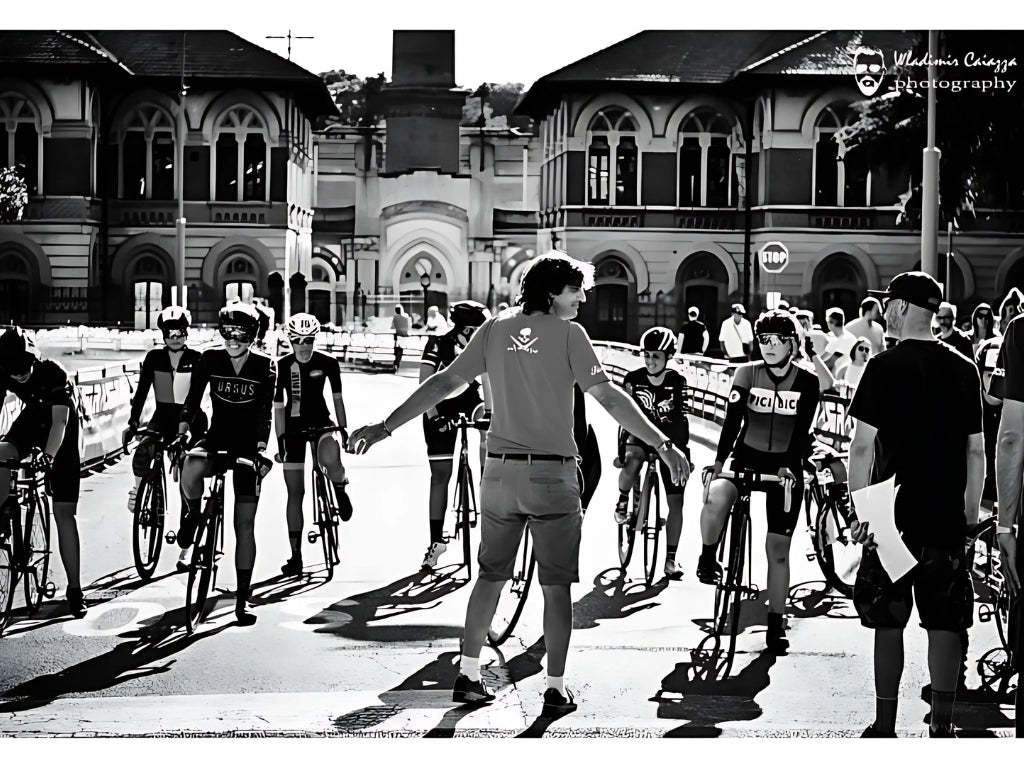By Leone Belotti
TRAMBAI - Rosti Criterium
Monsignor Pierre Daniel Huet, bishop of Avranches (Normandy), was considered the most cultured man of his time. Philosopher, historian, theologian, mathematician, chemist, he wrote in French, Latin and Arabic.
In his “Philosophical Treatise on the Weakness of the Human Spirit”, translated and published in Venice in 1757, at a certain point our bishop discusses the three types of Criterium necessary to support the weakness of the human spirit when one puts oneself to the test in the search for truth: the criterium of which , the criterium with which and the criterium according to which are: man, the intellect, the search for truth.
For us the criterium of which is the competitor, the criterium with which is the bicycle, the criterium according to which is the competition.
A criterium race is exactly a test of strength to combat the weakness of the human spirit.
The opinion of the contemporary philosopher (prof. S. Blazer) on Criterium races:
“If we want to maintain our humanity we must keep our instincts alive and the most civilized way to do it is play in the broad sense (sport, entertainment, art, love) sublimating or representing or in any case discharging and recharging the feral, primitive, survival, primate side; alternatively the super rational man who never plays, and always suffers, or never, and is capable of monstrous choices, rational, but monstrous”.
“Official sports in certain historical moments almost perform the opposite function, of opium of the people, to put the masses to sleep, with athletes who are not human, but machines. Criterium races are real men, who show the feral side of the human animal.
Criterium races are a parallel, alternative world, with a pure competitive spirit, an orgasm of energy, a gratuitous, glorious dissipation, without ulterior motives of profit or career”.
“Even the external side of this play, the style, the means, the outfit, the look, even when “reproduced”, have an even more pregnant sense of authenticity: as Arthur Miller said, speaking of his future wife Marilyn Monroe: “the real blondes are the dyed blondes”. Because they want to be blonde, very much. And so the competitors of the criterium, whatever their inspiration, their guiding spirit or their “dye”, are the basis of radical cycling.
Finding the criterion. Feeling sensations of excitement, fear, adrenaline, struggle. These things put your glandular system, your chakras, your organs, your temperament, your nature back into criterion.
You can return to society, to the world, even to your world.”
6 Crespi d'Adda criteria
Crespi d'Adda is a UNESCO site, a place out of time, a workers' village from the late nineteenth century that has remained as it was, a world unto itself, in a special landscape, at the confluence of the Brembo and Adda, a sort of island, the tip of the Bergamo island.
A “walled garden”, or a working village born from a utopia, the working community. Here there was the factory, the workers' houses, the houses of the employees and managers, the schools, the church, the cemetery, the sports field, the vegetable gardens, the nursery and the velodrome.
The velodrome was called La Pista, a concrete ring around the sports field, used for speed cycling races or as a finish line for road races, such as “Il Giro della Bergamasca”. Today La Pista no longer exists, but the name remains to indicate the area of the sports center.
We have a testimony from 1925 from a worker on the occasion of the visit to Crespi of Prince Umberto of Savoy: “What a handsome man! He stayed with us for a whole day and in his honor some cycling races were organized at the velodrome!”
In 1927 La Pista was a stage of the Giro della Bergamasca
Between the image of the riders on the 1927 track and the images of a 2017 Criterium race, there are 90 years: but you wouldn't say so. Criterium races have the spirit of their origins. Spirit of competition and sacrifice.
So we started to think of Crespi as the ideal setting for our Criterium. Walking around the village you can see the Crespi logo everywhere, printed on the buildings: an 8-pointed star, composed of two squares with a circle in the center. It represents geometry, dynamic balance, it is an ancient Masonic symbol, but it also indicates the North Star.
From this logo, together with that of UNESCO, transforming the circle into a bicycle crown, the logo of our Criterium was born.
The name Trambai instead comes from the dialect. The Trambai, or tram, was the freight train that arrived in the village to load and unload raw materials and finished products. By extension, the Trambai is the noise of the machines, of industrial work, and going to the Trambai meant going to Crespi, going to work: this was the name of the village, whose working heart was made up of deafening and continuously moving machines.
The Rosti Criterium Trambai will take place in Spring, on a route created inside the village. With us there will be our friends Balander's and their beers.


